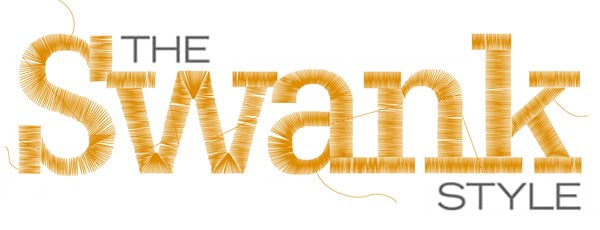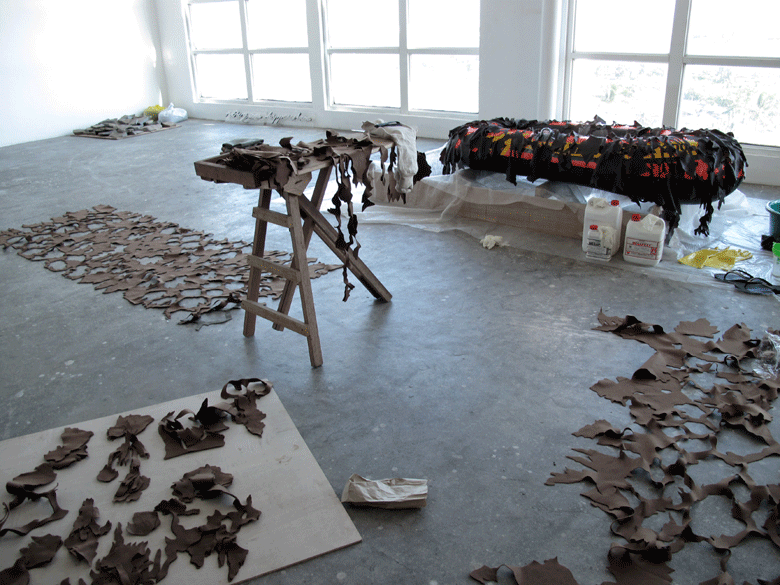
The first time I saw an exhibition of works by Patty Eustaquio, it felt like I suddenly was allowed entry into an empty auditorium and, while there was no orchestra or some sort of piped-in music, an aria was definitely being sung somewhere--you almost expect a soprano to enter from the backroom. It mattered little that the venue, the sLab space of the Silverlens galleries, used to be an auditorium and piano school, and that the title of the exhibition was Death to the Major, Viva Minor.
It was a rare occasion of fabulosity in the usually same-same mood of art openings. There was something so grand about the atmosphere that evening, the space full of beautiful things. Open hearts of animals in canvases the shape of fowls in graceful flight. A white violin sliced to reveal what seems to me a heart. A crochet lace piano cover--dyed the color of tea to make it seem old, soaked in epoxy so that it stands as if draped into an invisible piano. Everything evocative of the things one associates with Patty: a penchant for old things, a languorous femininity, a beautiful kind of sadness. 
Her new show, also at sLab, which I haven't seen, seems a continuation of the motif that began with that show from 2009. In this one, however, the music is specific. She has chosen Elvis Costello's "Dear Sweet Filthy World" (also the title of the show) to become sort of a musical score for her new works: oil paintings, cardboard sculptures, and boats cut from felt and, much like her much-loved 'piano,' cast in epoxy resin.
We asked Patty about her new works, her new studio (photographs of which she very kindly snapped for Swank) and the lyrical quality of her pieces.
Describe your new space, the size of it, the look---from when you found it to how it looks now.
I love my new space because I've never had so much space to work in. It's a high-ceilinged open type space. It was a storage room when I found it, so it required a lot of work: a lot of cleaning, plumbing. I built rooms just so I have some privacy, but the entire flat is my work space.
How much time do you spend in your workspace?
I hardly ever leave the studio.
The show in Silverlens were all created in this new space? Would you say the space in a way have touches of influences on the works?
Yes, I made everything in the new space. I don't think I would have managed to make such big pieces if I didn't have the new space. But I did already have all the works in mind, which is why I was in such a rush to move in.
What drew you to Costello's "Dear Sweet Filthy World," a suicide note with music?
I love Elvis Costello--three out of four solo exhibits were titled after his songs. But I particularly cling to "Juliet Letters" because I love the irreverence of the content, the mix of violins with this sound that still sounds new to me, even if I've heard it a million times. "Dear Sweet Filthy World" is just so melodramatic that it's funny. Not laugh-out-loud funny, but the kind where you shake your head and say I can't believe someone can sing and play this mockery so beautifully like Elvis.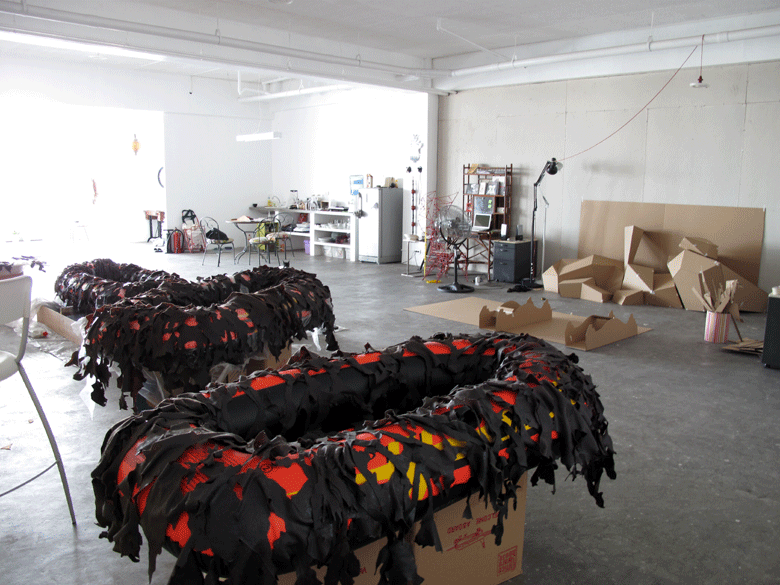
The first time I went inside sLab and you had a show, there was something not just plain musical, but operatic about the entire space and the pieces (and not only because there was a crocheted piano)---do you like working with music? Is it an essential part of how you work?
I do listen to music while I work, and usually when I'm feeling particularly dim about my work, I go about searching for new music to listen to. I'm drawn to music with beautiful lyrics--- probably because I spend nearly all my time alone so it's almost conversation. But also because I find that new music challenges me to put things together in a way I haven't tried. I do like songs that have an operatic feel, Costello is a lot like that. Antony and the Johnsons is an artist I listened to 24/7 a couple of years ago until I tired myself out. I think I like music that feels big and old, but is also so contemporary in its sensibility so that you feel like there's an amplification of what's going on, albeit a non-mainstream event.
Since we're talking about your new space, what's your favorite area/element in it?
I have tall windows lining an entire side of the cube, so I get lots of light all day. I have a view of parts of the gritty city, but there are hills beyond, Laguna de Bay and Makiling in view especially on a clear day. It's quite something to wake up to. It gives you perspective of where you are and what you have.
How do you begin a day?
Two espresso shots, toast and fruit. I'm a creature of habit. If something ruins my routine, I find it hard to work the rest of the day.
Dear Sweet Filthy World is on exhibit from March 17 to April 17, 2010. It runs simultaneously with POSTLOCAL: Painting with Bruihn, Nona Garcia, Anna Varona, curated by Isa Lorenzo; A Country
Road. A Tree. by Jet Pascua.
On April 17, Saturday from 3-5pm Eustaquio elaborates on Dear Sweet Filthy World, where the construction of memory is built alongside her narrative "to convey the irony of our feeling towards reality, the realities in life, the world."
Tuesday, March 30, 2010
ARTIST IN RESIDENCE ] Patty Eustaquio and her dear, sweet, not-so-filthy new space
Thursday, March 4, 2010
MODERN LOVE ] Tomorrow night, Paulino Que is bringing out the jewels from his palace
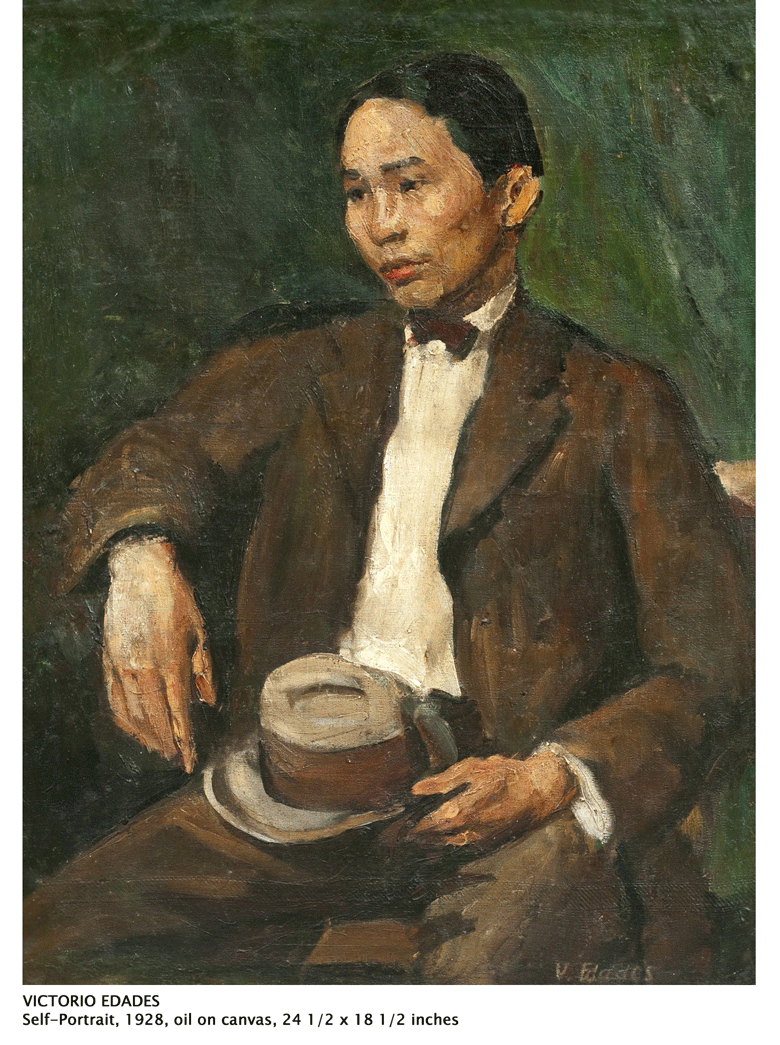 Image courtesy of Finale Art File.
Image courtesy of Finale Art File.
Finale Art File is proud to showcase “Meaning To Be Modern”, a selection of Philippine paintings from 1907 to 1959. The exhibition presents a vital part of art patron Paulino Que’s vast collection of Philippine art and antiquities. It focuses on the early periods of Philippine modern art, spanning the initial phases of the movement with Victorio Edades, his precursors Juan Arellano and Diosdado Lorenzo, and peers Galo Ocampo and Carlos Francisco, as well as the developments thereafter: the Thirteen Moderns, incipient and late neorealism, and abstraction on the cusp of the Sixties. 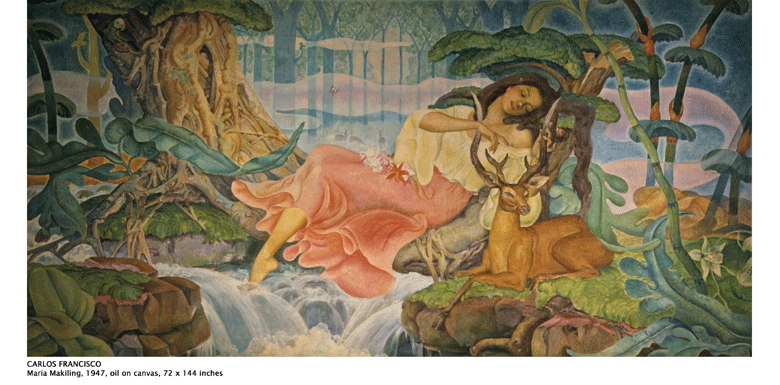 Image courtesy of Finale Art File.
Image courtesy of Finale Art File.
This collection is exceptional and exemplary, surveying the watersheds of Philippine modern art, from the early part of the 20th century to the Sixties. The Fifties may be considered the high point of the process of modernity in Philippine art, preceded by years of debates with the Amorsolo conservative school of romantic realism, experimentation with a range of styles from the school of Paris, and the formation of a distinct visual idiom of modern art that was cosmopolitan and uniquely Filipino.  Image courtesy of Finale Art File.
Image courtesy of Finale Art File.
Aside from the art works, this collection also brings to light the significance of the Paulino Que collection, which is one of the most indispensable in private auspices and could rival the combined treasures of public institutions of modern art collection such as the National Museum, the Cultural Center of the Philippines, the Ateneo Art Gallery, and the Vargas Museum. Featuring 36 artists and 80 works, it promises to be an event in itself, a rare occasion in which a private collection becomes public discourse as students, scholars, and supporters of Philippine art gain access to it and hopefully engage it with the same discernment that went into its shaping.
The exhibition will run from March 6 to 31, 2010 at Finale Art File, Warehouse 17, La Fuerza Compound, (enter Gate 1), 2241 Pasong Tamo, Makati City. Student tours are welcome. Should you request a guided tour, call 8132310 or email finale@pldtdsl.net. Admission is free. Finale Art File is open Monday to Saturday, 10am to 7pm.
Wednesday, March 3, 2010
FRESH PAPAYA ] A favorite space undergoes a little retweaking
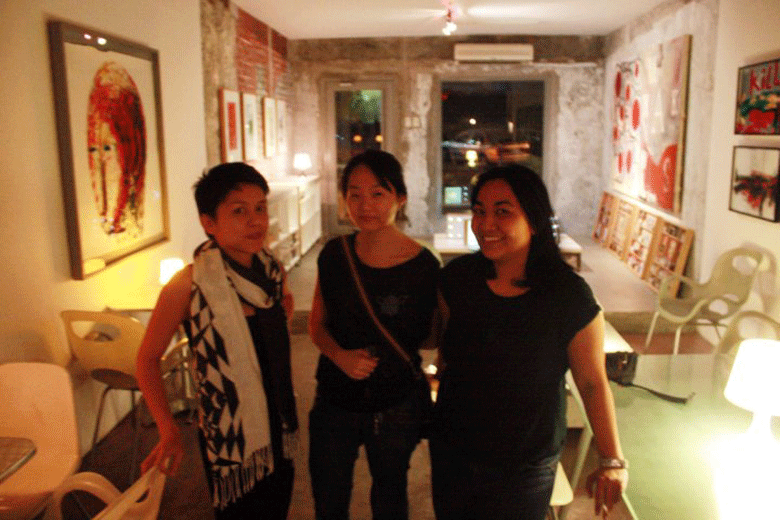 Post-reopening guests, artists Patricia Eustaquio, MM Yu and Nona Garcia.
Post-reopening guests, artists Patricia Eustaquio, MM Yu and Nona Garcia.
Of the local galleries, Green Papaya holds a distinguished spot. It can be outrageously intellectual one moment, say, in exploring the interrelationship between performance and dialogue (“The snobbish tone of a roundtable discussion belies the possibility of taking something much seriously than how it already appears to be because surely there is nothing as tedious than witnessing steadfast attempts of repeating patterns to the point of their own exhaustion.” Whew, ka-exhaust.) Or when talking about the annual Serial Killers group show (“Serial Killers is a response to parallel notions of seriality, non-seriality, or counter-seriality.”). Still, from that high up, nowhere in the art scene is the atmosphere most grounded than at the rough-around-the-edges halls of this space near the corner of T. Gener Street and Kamuning Road in Quezon City.
Here, far from the polished, finished walls of the spaces everywhere else, despite the occasional presence of collectors and other demigods, the artist surveys the new works of their colleagues, then parties about unencumbered, owning the space like home. Maybe it’s the artists who run it. Maybe it’s the San Miguel. The thing is, no matter the culprit, Green Papaya is—to use a not-very-cool description—fun. And now that the space is on its third incarnation—as a full-fledged bar but with art on the side—the interiors remain possessed of its original resolve: to carry the best and, ugh, wasak in contemporary art, and to give the community an all-embracing second space to come home to.JG 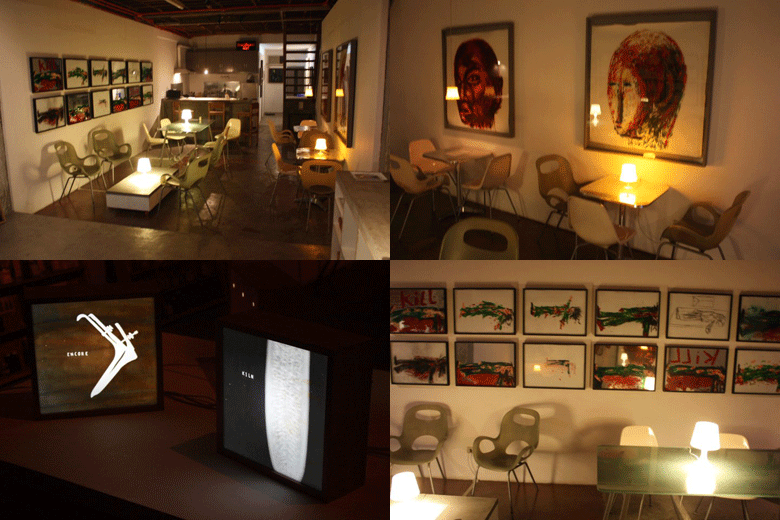 The ground floor space is the bar and art shop (selling small, old works by the likes of Maria Taniguchi and Nona Garcia), the second floor has been turned into a studio and living space for artist and gallery owner Norberto "Peewee" Roldan. Clockwise from top left: the bar had been moved further to the front and serves, the last time we were there, red wine, vodka, Johnnie Walker and beer, of course; works by New York-based artist Gaston Damag unearthed from the Papaya archives; more works by Damag who recently had a show of installations at sLab; and lightboxes by Nona Garcia.
The ground floor space is the bar and art shop (selling small, old works by the likes of Maria Taniguchi and Nona Garcia), the second floor has been turned into a studio and living space for artist and gallery owner Norberto "Peewee" Roldan. Clockwise from top left: the bar had been moved further to the front and serves, the last time we were there, red wine, vodka, Johnnie Walker and beer, of course; works by New York-based artist Gaston Damag unearthed from the Papaya archives; more works by Damag who recently had a show of installations at sLab; and lightboxes by Nona Garcia.
Green Papaya Art Projects is located near the corner of T.Gener Street and Kamuning in Quezon City. It's open from 4pm onwards Wednesdays, Fridays and Saturdays.
Photographs by Rico Quimbo.
Tuesday, March 2, 2010
ARTIST STATEMENT ] Argie Bandoy will give you a topic. 14 topics. Discuss.
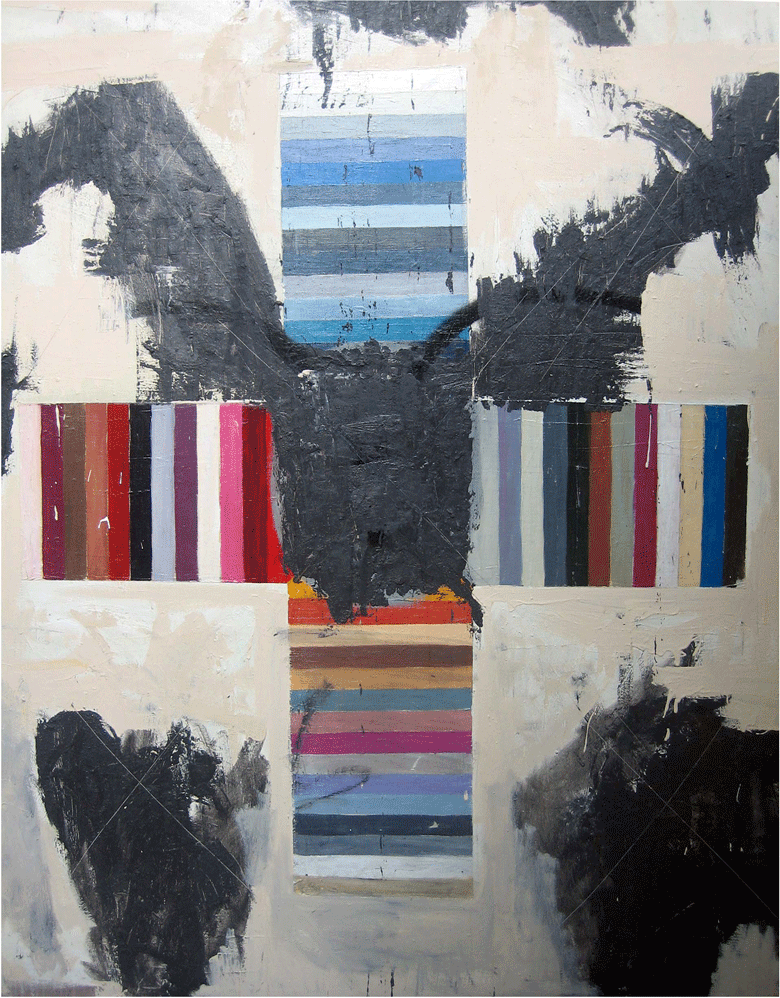 Argie Bandoy, 2010. Image courtesy of Nova Gallery.
Argie Bandoy, 2010. Image courtesy of Nova Gallery.
2. Painting is Brash and brute and dirty.
3. A Bad painting is a good painting.
4. Painting by manhandling the paint.
5. A good painting only exists in the imagination.
6. Painting always asks for more.
7. Painting is superficial.
8. Painting demands the painter’s flesh and blood.
9. A painter is a delusional being.
10. A Painting always contradicts the painter.
11. Aiming for Beauty produces unpleasant results.
12. Repulsive is better than playing nice.
13. Bad humor is always the best.
14. Painting is a cerebral activity.
Artist Argie Bandoy will show his new collection of works entitled “A discourse on bad taste and guilty pleasures” this Friday, March 5 (will run up to the 25th) at the Nova Gallery, La Fuerza Compound, 2241 Don Chino Roces Ave., Makati City. For more information call 392-7797 or send an electronic mail to gallerynova@gmail.com.
And since we're on the discussion of discussions, what do you think of this?
